| Revista Umělec 2011/1 >> Petra Pětiletá: Catching the Beauty | Lista de todas las ediciones | ||||||||||||
|
|||||||||||||
Petra Pětiletá: Catching the BeautyRevista Umělec 2011/101.01.2011 Alena Boika | in transition | en cs de |
|||||||||||||
|
Dedicated to the memory of Georgy Ivanov: Subatomic Decomposition.
Every morning when I look out of the window, I see Petra Pětiletá running up the hill. Sometimes I think Petra waits just for me to come to the window before starting her impetuous run, which always ends in the same way: a red cap disappearing beyond the horizon, an instantaneous, bright touch of the holidays that flashes for a moment and remains with me for the rest of the day, a feeling you cannot grasp but that you keep returning to, trying if not to understand then at least to experience again. Petra’s art leaves you with the same feeling: first of all you want to look at it. The most amazing thing about her work is that she continues to be ceaselessly amazed by people, and this amazement takes the viewer by surprise and absorbs him into experiencing fragments from the lives of the characters in her numerous and always people-oriented projects, which have decided a priori to give up on the hypothetical idea of separating life and art. This feeling of surprise would appear to form the basis of a desire to change the world and make it better – to create a world in which there are no “small people” and in which an “ordinary man” is not an uninteresting one, a world in which miracles are discovered in each and every moment of daily life. Pětiletá’s inclination towards miracles and transformations can be seen in her early works (see Umělec 3/2004), in which she replaced photographs from tourist agency booklets with her own image or made herself the main character in a romantic scene involving a declaration of love. It was as if she were telling all daydreaming and doubtful sleepy girls, “You can be there, too,” declaring boldly that the main tools for transforming the world are faith and the power of imagination. Beautiful people: The girls she spent a long time secretly watching are not doubtful. If anything, doubts and certain complexes brought them to the porn studio where Petra was lucky to work. Certainly no one used such a straightforward and crass word as “porn” – like everything sleek and unintelligible, it was called a “design studio.” Petra says that, at first, she even liked her job: she had her own office with a small south-facing balcony where she could take coffee-and-cigarette breaks, letting her eyes wander languidly over the Garden of Eden. There was a kind of luxury to it, allowing her to disengage from the work she was there to do. Which was: cutting and editing video. People who come to a shop like Levné knihy (Cheap Books, a network of discount stores selling books and movies, including porn) to buy a hardcore movie have no idea of the kinds of scenes cut out by the editor. They are scenes filled with embarrassment, doubt, fear, shame, and despair. This is what Petra spotted while working with the film footage. And these scenes formed the basis for her Community Concepts (2006) project, which she named after the company – a major producer of pornographic products in the Czech Republic – where she worked for about a year. The project consisted of several complementary parts that could be viewed in their logical sequence. Another project, ID, shows a series of close-up shots of girls smiling into the camera and showing their ID cards. As a rule, the girls depicted in the IDs are quite young – without any makeup or other varnish – but the girls holding them look totally different, the way the business requires. (As I am writing – this is not her usual hour – Petra has just run up the hill in wearing a red raincoat, blue scarf and black-and-white polka-dot purse, and disappeared again. The truth is out there). The video Nothing is Too Hot shows various’ girls first time in the hardcore industry. We see them arriving, getting onto a streetcar with wistful romantic expressions, imagining themselves as future stars of the big screen (never mind that the movie tests they will be doing do not quite look like the big screen, but you have to start somewhere). They want to seem independent and self-assured, but we see how their behavior changes when they are alone: they do not know that they are being filmed, and now they bite their lips, with a lost expression on their face, their movements are constrained. But here comes the suntanned hero and he gives the girls’ with a friendly slap – time to undress and play to the rules that each of them accepted in coming here. I once came across one of the film’s protagonists at a currency exchange office in the center of Prague. Her face looked familiar to me, and I stared at her thoughtfully waiting for my turn. Just then, I remembered where I had seen her, and it presumably reflected on my face, because the girl blushed deeply, whispered something to her colleague, and quickly left. I was strangely uneasy about my face having given me away, and I wanted it to be easier for her. Another logical part of this project is the series of photographs presented under another simple name – Design Studio. Here, the photographer has effortlessly captured the made-up actors in various outfits. The pictures are full of gloss and color, but no life. All that is left is a shell, which the participants try to present as something that is supposed to invoke desire. The liveliest photograph is of women’s shoes, transparent, left on the edge of the pool. The sun is shining joyfully through these shoes, creating a rainbow. The image was taken by the manager of the company himself just prior to another show, and he was so happy afterwards that he told everybody “Look at how great it is!” Maybe this simple longing for beauty revealed the very essence of his desire to find, to discover, to disintegrate the atom of life. Maybe he felt that by dissecting the most primitive human desires he could get close to this atom, if only for a moment. But there is more life in those shoes than in any of the energetically groaning and posing girls. Still, the yearning to find, discover and disintegrate the atom of life does not go away – ”and the ship sails on.” In my opinion, this is how Petra perceived these photographs. Her work Vesmír (Space, 2007) could be understood as an original response to this yearning, an exaggerated metaphor for human aspirations. At first glance, nothing special is happening in this short (infinitely looped) video. We see a plain image that could just as well be a Windows screen saver, depicting a black space with orbiting planets, large and small. But if we take a closer look, what kind of planets do we see? In the small, sometimes almost indiscernible circles, we can identify something most shameful and natural, something that cannot be disintegrated: the most simple and physical essence of sexual intercourse. There are no heroes or love, no morale or non-morale, there is only this, the simplest movement of life, and the desire to capture this one and only meaning. In its purity and clarity of expression, this was the work that impressed me most of all at the scandalous Sexismus? (Sexism?) exhibition, where it was first displayed (Václav Spála Gallery, 2008). Another work that Petra prepared especially for this exhibition was Martin Splash is In Front. The video was hidden in a special box behind black curtains. By pulling the curtains aside, the viewer entered into the Garden of Eden. Against a background of lush green, the video showed several handsome masturbating youths, their faces disfigured by lust. They reach for each other, throw back their heads and groan when reaching the climax of pleasure. The slow-motion video is accompanied by a strange echoing music that heightens the unexpected sense of alienation of the protagonist, who stands almost motionless in the foreground. It is almost as if the music had put him into a trance, and Pětiletá uses this trick to plunge the viewer into a trance as well by compelling him to focus his attention on the motionless figure and his detached expression. In Waiting (or its full-length version I can’t make it quickly enough, 2007), we find a similar sense of suspense and anticipation of something unclear, something that is about to happen (and, in the unabridged version, does happen – though in an exaggerated and unexpected way). Here, well-groomed girls wearing smart clothes and looking outwardly absolutely cool are in the film studio, waiting for the men to come. They are talking to each other, tapping their shoes, sipping cocktails. The scene reminds me a little of the opening scene from one of my favorite films, Ettore Scola’s The Ball (Le Bal, 1983). Then an elegantly dressed man appears and tells the girls in an exceptionally courteous and well-bred tone of voice that the men have arrived. At this point the scene from The Ball ends, and an orgy, an in-your-face porno begins. This transition is so abrupt and so unexpected that the viewer has no time to prepare for it. Petra nevertheless shows mercy on the viewer’s nerves, and employs various visual effects in order to make the scene less “visible” and thus more “artistic.” Compared to works like this, Petra’s other works seem like innocent jokes. For instance, Adds (Tarzan, 2007) shows a funny young man frowning grotesquely and making strained groaning sounds. The man is completely dressed and is standing in some dreary room. His groaning is supposed to represent passion. Another such “mock” work is the Záminky (Excuses) series; one part of this series – Vajicka (Balls, 2007) – was first presented to the public quite recently, at the Sex extrémně líbezný (Sex Extremely Lovely) exhibition held at the XXL Gallery in Louny in the autumn of 2010. These works’ common theme is that the female protagonists are stained by something, that they spill something on themselves or smudge or pour something onto each other. The video, which was made by slicing together a movie purchased at the aforementioned , acquires a different tone when viewed in the gallery. The absurdity of the plot, which involves two young well-dressed women breaking chicken eggs against each other while engaged in an idiotic but quite plausible dialogue, makes this video another of the most well-remembered works that I have seen recently. Beautiful souls through beautiful songs: The reader may get the impression that porn and this aspect of human life is the only subject that Petra is interested in, but this is not the case. Her interests are people as they are, and their interactive study – of which Turn Me On (2005) is yet another vivid confirmation. For this project, Petra chose several people who had no relation to art whatsoever and suggested that they create a video with themselves as the main characters. Everyone chose a song that had a special meaning for them at the moment. Again, the project’s main purpose was the “disintegration of the atom of life” – to find, reveal, and display that which is most important and intimate, what is kept back from the attention of others. What Pětileta does is approach the intimate side of the soul without allowing for any extra intrusion. The project culminated with an evening party at the café of the Divadlo Komedie (Comedy Theatre), where all the participants gathered to share their joy at having viewed the results of their cooperative efforts. Two of them were not present: Danek, whose song Turn Me On performed by Norah Jones had given the project its name. In the video, he filmed his grandmother, who in the meantime had passed away; and Rahman from Sudan – who died before being able to experience this happy moment. If not for these footnotes, the viewer would never have questioned the extent to which these people were real, and would still perceive them as characters from a short film, out of time. The strange thing is that death, or an awareness of death, immediately reasserts life in full and in its experienced reality. In my opinion, this pulsation of life, asserted by different methods, is the central point of Petra’s art. It is hardly a coincidence that the word “life” appears in the titles of many of her works. Beautiful time: In one of the Turn Me On videos, the participant lays out stones, creating a distinctive mosaic of her life. Petra often uses the metaphor of mosaics (or rather, puzzles) in many of her works, something we first encounter in her paintings. What is SMS (2001) – a large 130x170cm canvas densely covered with life-sized acrylic-paint text messages received and sent by the artist – if not a peculiar kind of puzzle? One continuation of this project is The Statement (2005). While a student at the Academy of Arts in Prague, Petra went on a student exchange to Poznań (Poland), where she attended the painting studio – no one he ever bothered to ask her whether she wanted to do painting. Time went on, there was no desire, but she had to paint. She finally found inspiration when she began to paint an academic program, postcards, and later – when she was already in England – a passport, an insurance policy, credit cards and a couple of postcards. At this point, we may consider painting to be a successfully concluded stage in her artistic career, one she does not feel the need to return to. But let us not forget about puzzles and about how tightly expressive media (media and meanings) are interlaced in her works. If we look at the “Čtyři stěny” (“Four Walls,” 2009) exhibition prepared jointly with Linda Urbanková, we can see the evolution of her early works. One of them is Grey Puzzle, a complete jigsaw puzzle painted in slightly different gradations of gray; another is Work Space, an embroidery showing the artist’s monitor display in all details and minutia. Pětiletá worked on these two items in Riga, at a time when – for the first time in her life – she found herself immersed in a state of involuntary boredom and senselessness, not of her own life, but of the life languidly going on all around her. All this led to the realization of the Beautiful Time project, which was implemented as part of the Survival Kit 2 festival, again in Riga (2010). Influenced by the aforementioned general sense of depression and total unemployment, Petra came up with the idea of doing something that would – at least for some people – make life better by giving it some kind of (even if only outward) expediency. She got the largest (4,000 pieces) and most beautiful (The Birth of Venus by Botticelli) jigsaw puzzle she could find, posted an ad in a newspaper that she needed some workers, and waited. Imagine her surprise when, on the appointed day, there was a small crowd of people at her door, looking at her hopefully and trying to figure out who had showed up first. Those who did not make the list of first-comers and were thus not offered work were bitterly disappointed. The lucky ones got down to business: all day long, for eight or more hours, they worked diligently to put the puzzle together. No one ever thought whatever she needed it for, or what was to be done after the picture on the floor had been completed. When, after two weeks, Petra announced that she had no more money to pay them, they still showed up because they wanted to finish the work. Petra had to go back to Prague, so she couldn’t complete the puzzle, but the people kept on coming, sometimes with their children helping them. Her “workers” told her that the work had made them happy. Maybe, while putting together the puzzle, they had discovered something within themselves that had remained unexplored until then, but Petra says that when she planned the project as a demonstration of excellently organized but futile labor, she had not expected such an effect, and these people touched her deeply. Beautiful children: Petra has been teaching English, drawing and free thinking to children for a long time. Being a harmonious person and discovering places for planting art all around her, Petra does everything she can to support her pupils’ creative impulses by inspiring them through her own example and by not imposing any rules. A collection of the collages that have resulted from her creative approach would possibly shock the average schoolteacher. As for us – we can only be happy that there are such flowers growing among us. Translated from Russian by Tatyana Korzhitskaya.
01.01.2011
Artículos recomendados
|
|||||||||||||
|
04.02.2020 10:17
Letošní 50. ročník Art Basel přilákal celkem 93 000 návštěvníků a sběratelů z 80 zemí světa. 290 prémiových galerií představilo umělecká díla od počátku 20. století až po současnost. Hlavní sektor přehlídky, tradičně v prvním patře výstavního prostoru, představil 232 předních galerií z celého světa nabízející umění nejvyšší kvality. Veletrh ukázal vzestupný trend prodeje prostřednictvím galerií jak soukromým sbírkám, tak i institucím. Kromě hlavního veletrhu stály za návštěvu i ty přidružené: Volta, Liste a Photo Basel, k tomu doprovodné programy a výstavy v místních institucích, které kvalitou daleko přesahují hranice města tj. Kunsthalle Basel, Kunstmuseum, Tinguely muzeum nebo Fondation Beyeler.
|








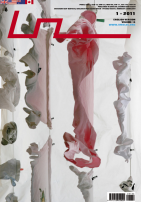


















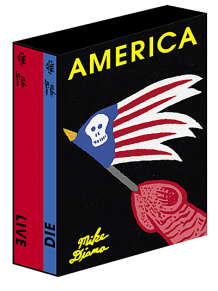





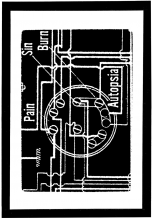
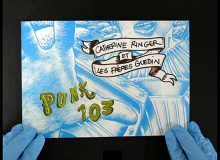
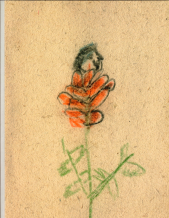


 We Are Rising National Gallery For You! Go to Kyjov by Krásná Lípa no.37.
We Are Rising National Gallery For You! Go to Kyjov by Krásná Lípa no.37.
Comentarios
Actualmente no hay comentariosAgregar nuevo comentario